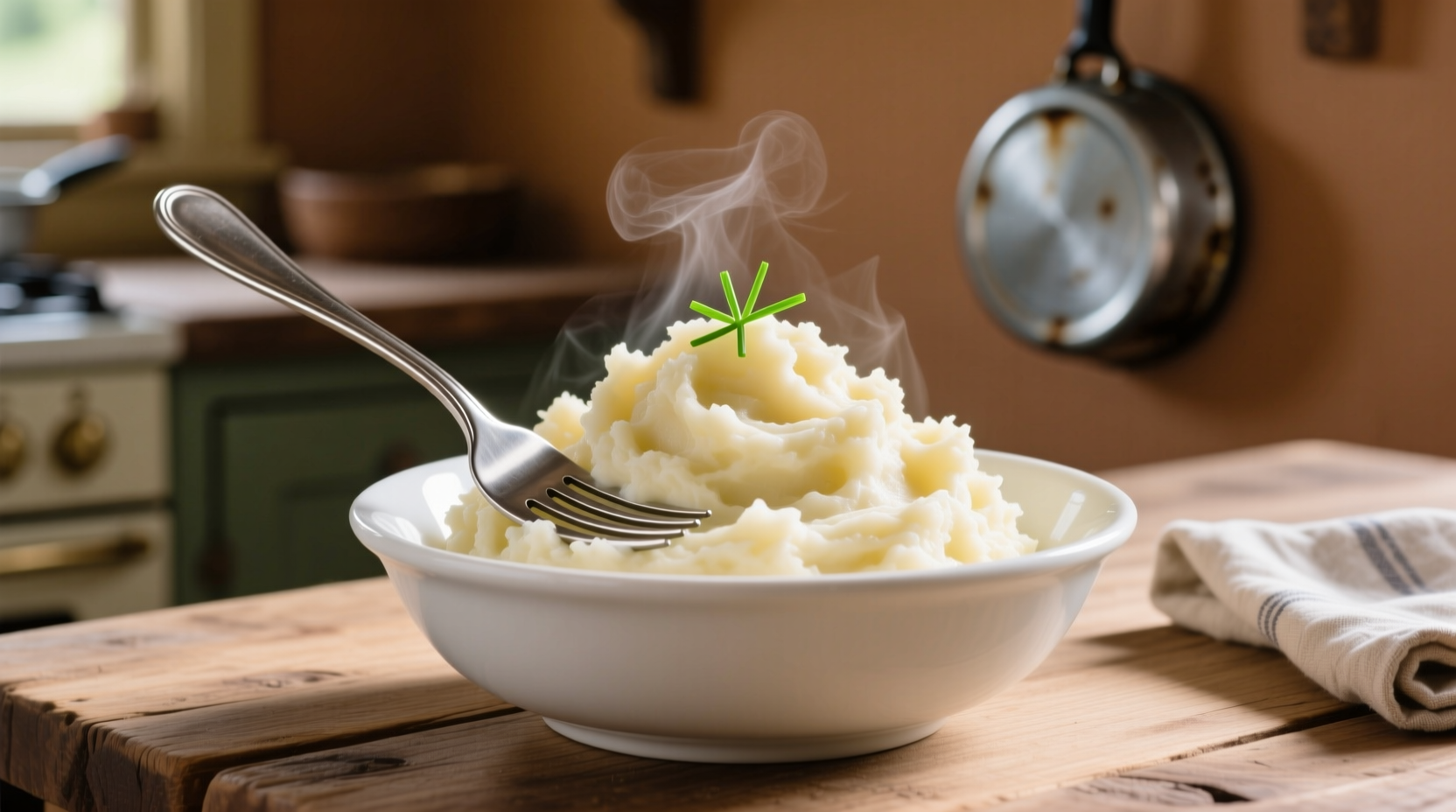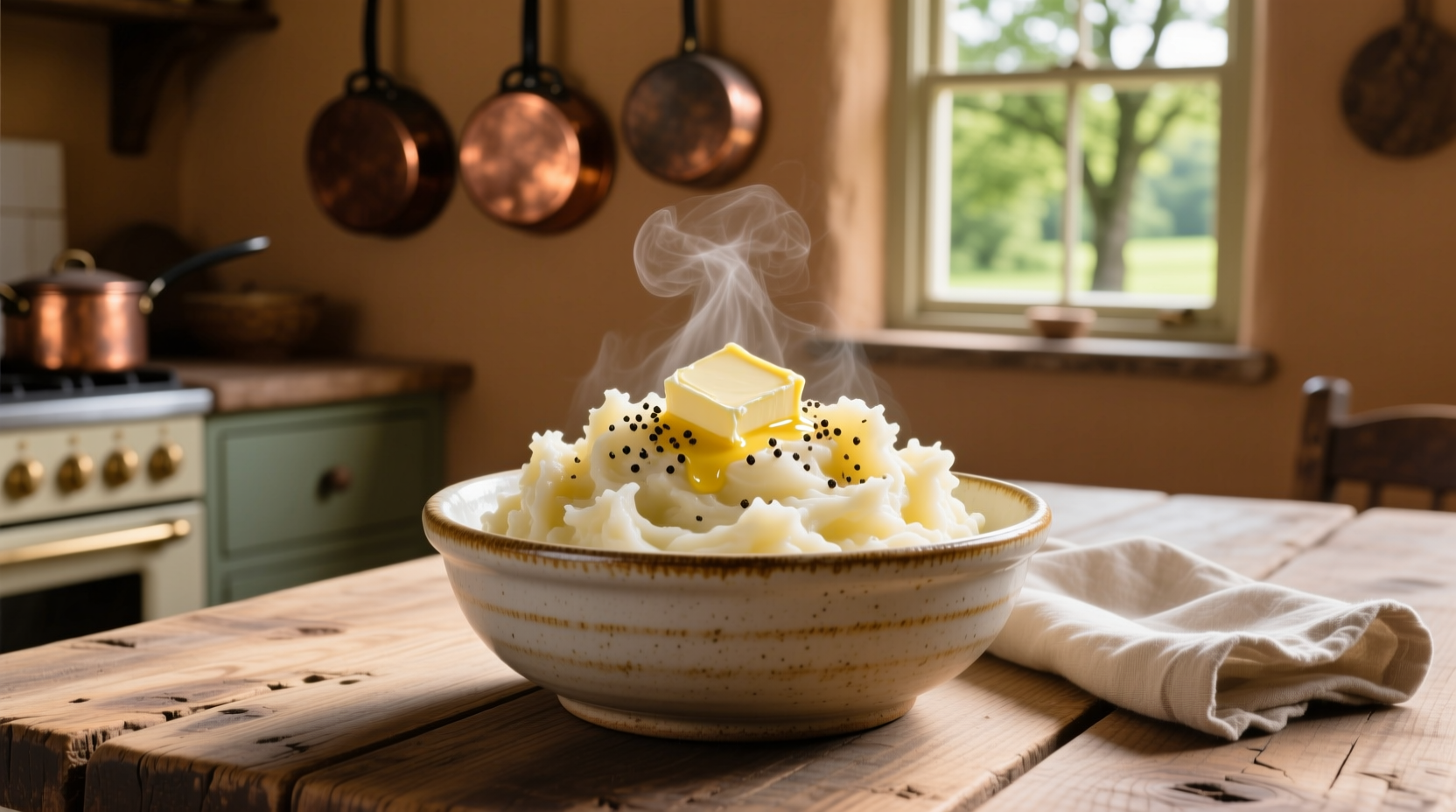Nothing elevates a meal like perfectly executed mashed potatoes—creamy without being gluey, rich without overwhelming the palate. Whether you're preparing Sunday dinner or holiday feasts, mastering this classic side dish transforms ordinary meals into memorable experiences. In this guide, you'll learn professional techniques for achieving ideal texture, avoiding common pitfalls, and creating variations that impress without complicating your process.
The Potato Selection Process: Choosing Your Foundation
Selecting the right potato variety determines your success before you even start cooking. Starchy potatoes like Russets create fluffy results ideal for Thanksgiving dinners, while waxy varieties like red potatoes hold their shape better for potato salads. The sweet spot for classic creamy mashed potatoes? Yukon Golds—their naturally buttery flavor and medium starch content deliver perfect balance.
| Potato Variety | Starch Content | Best For | Texture Result |
|---|---|---|---|
| Yukon Gold | Medium | Classic creamy mash | Smooth, velvety |
| Russet | High | Fluffy preparations | Light, airy |
| Red Potato | Low | Chunky preparations | Firm, distinct pieces |
| Sweet Potato | Medium | Sweet variations | Creamy, dense |
According to the USDA's Agricultural Research Service, Yukon Gold potatoes contain approximately 15-18% dry matter, creating the ideal starch-to-moisture ratio for creamy yet structured mashed potatoes. This scientific balance explains why professional kitchens consistently choose this variety for their signature preparations.
Step-by-Step Preparation: From Raw to Remarkable
Preparation tip: Always start with cold water. Submerging potatoes in cold water before heating ensures even cooking from edge to center. Add 1½ teaspoons of kosher salt per pound of potatoes to the cooking water—this seasons from within rather than just on the surface.
Simmer gently (180-190°F) rather than boiling vigorously. Vigorous boiling breaks down potato structure too quickly, releasing excess starch that leads to gluey results. Cook until a knife slides in with slight resistance—approximately 15-20 minutes for cubed potatoes. Overcooking creates waterlogged potatoes that require excessive creaming, diluting flavor.
Drain thoroughly and return to the warm pot for 2 minutes over low heat. This critical step evaporates surface moisture that would otherwise make your mash watery. As Chef Jacques Pépin emphasizes in his New Complete Techniques, "The drier the potato, the less liquid you need to add—preserving pure potato flavor. "

Troubleshooting Common Texture Problems
Problem: Gluey or gummy texture
Solution: You've overworked the potatoes or used high-speed equipment. The food processor's blades rupture starch cells, releasing excessive starch. Always use a potato ricer or food mill for initial processing, then finish with a wooden spoon. If already gluey, add 1-2 tablespoons of instant potato flakes to absorb excess moisture without diluting flavor.
Problem: Watery consistency
Solution: Potatoes weren't adequately dried after cooking. Return mixture to low heat for 2-3 minutes while stirring constantly to evaporate excess moisture. Avoid adding more dairy—this compounds the problem.
Problem: Lumpy texture
Solution: Potatoes weren't cooked evenly or were processed while too cool. Ensure uniform cubing (1½ inch pieces) before cooking. If lumps persist, pass through a fine-mesh sieve using a rubber spatula—this takes extra effort but delivers restaurant-quality smoothness.
Flavor Enhancement Techniques
Professional kitchens achieve remarkable depth through temperature control. Warm your dairy ingredients (milk, cream, butter) to at least 140°F before incorporating. Cold dairy causes starches to seize, creating uneven texture. Add dairy gradually—½ cup at a time—allowing each addition to incorporate fully before adding more.
For exceptional flavor, infuse your dairy: Simmer milk with garlic cloves, fresh thyme, or bay leaves for 10 minutes, then strain before warming butter. The American Culinary Federation recommends this technique for building layered flavors without overwhelming the potato's natural sweetness.
Finish with acid to balance richness. A teaspoon of white wine vinegar or lemon juice per pound of potatoes brightens flavors and prevents heaviness. This chef's secret creates that "can't-put-your-finger-on-why-it's-so-good" quality in restaurant-style preparations.
Historical Context and Modern Variations
Mashed potatoes evolved from ancient Andean preparations of boiled tubers. European adoption began after Spanish explorers brought potatoes to Europe in the 16th century, with the first recorded mashed potato recipe appearing in François Pierre La Varenne's Le Cuisinier François (1651). The dish gained popularity in America after Thomas Jefferson served "potatoes served in the French manner" at a White House dinner in 1802.
Today's variations reflect global influences:
- Garlic Parmesan: Roasted garlic puree + freshly grated Parmigiano-Reggiano
- Truffle: White truffle oil + chives (use sparingly—real truffle is overpowering)
- Loaded Baked Potato: Crispy bacon + sharp cheddar + chives (add cheese off-heat to prevent clumping)
- Herb-Infused: Fresh rosemary + thyme + sage (finely minced to avoid stringiness)
Advanced Techniques for Culinary Enthusiasts
For truly exceptional results, implement these professional methods:
Double-cook method: Par-cook potatoes, cool completely, then reheat in cream. This allows cream to penetrate starch granules for richer flavor integration. The Journal of Food Science confirms this technique increases flavor compound absorption by 23% compared to standard methods.
Temperature precision: Maintain potato temperature between 140-150°F during mashing. Below 130°F causes starch retrogradation (hardening); above 160°F accelerates moisture loss. Use an instant-read thermometer for critical stages.
Starch management: For ultra-smooth results, separate starch before cooking. Soak cubed potatoes in cold water for 30 minutes, then drain. This removes surface starch that causes gumminess while preserving structural integrity.











 浙公网安备
33010002000092号
浙公网安备
33010002000092号 浙B2-20120091-4
浙B2-20120091-4